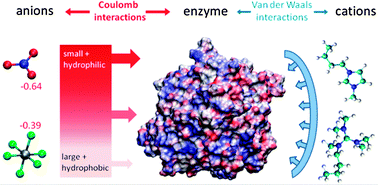On the different roles of anions and cations in the solvation of enzymes in ionic liquids†
Abstract
The solvation of the

- This article is part of the themed collection: Biophysics and biophysical chemistry in PCCP
* Corresponding authors
a
Institute of High Performance Computing, 1 Fusionopolis Way, #16-16, Connexis, Singapore 138632, Rep. of Singapore
E-mail:
marco@ihpc.a-star.edu.sg, wuping@ihpc.a-star.edu.sg
Fax: +65 6463 2536
Tel: +65 6419 1468
The solvation of the

 Please wait while we load your content...
Something went wrong. Try again?
Please wait while we load your content...
Something went wrong. Try again?
M. Klähn, G. S. Lim, A. Seduraman and P. Wu, Phys. Chem. Chem. Phys., 2011, 13, 1649 DOI: 10.1039/C0CP01509A
To request permission to reproduce material from this article, please go to the Copyright Clearance Center request page.
If you are an author contributing to an RSC publication, you do not need to request permission provided correct acknowledgement is given.
If you are the author of this article, you do not need to request permission to reproduce figures and diagrams provided correct acknowledgement is given. If you want to reproduce the whole article in a third-party publication (excluding your thesis/dissertation for which permission is not required) please go to the Copyright Clearance Center request page.
Read more about how to correctly acknowledge RSC content.
 Fetching data from CrossRef.
Fetching data from CrossRef.
This may take some time to load.
Loading related content
